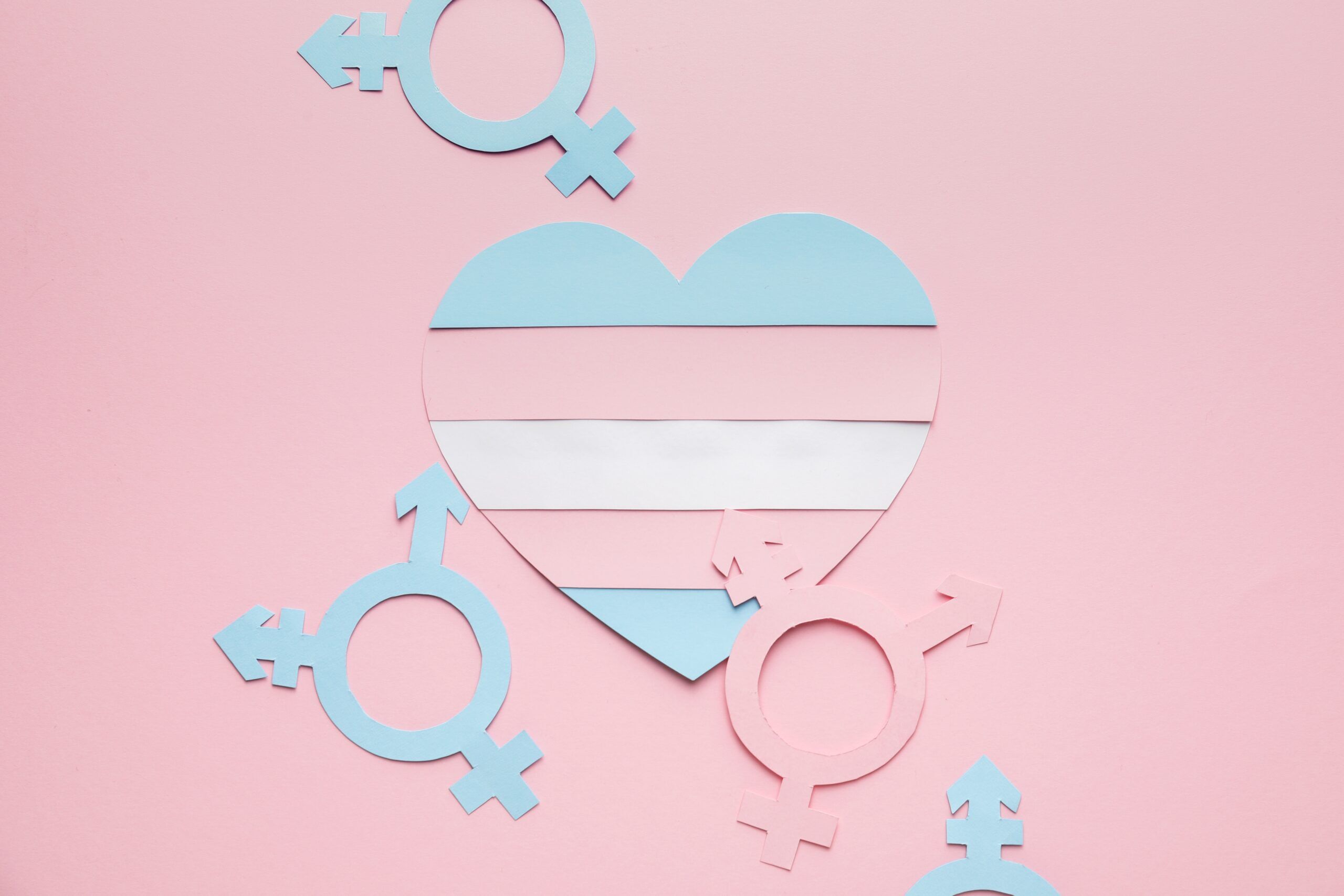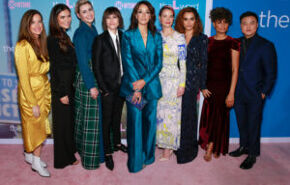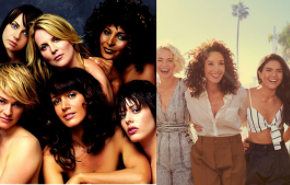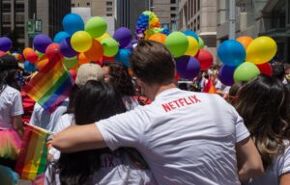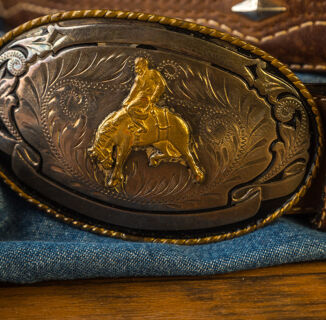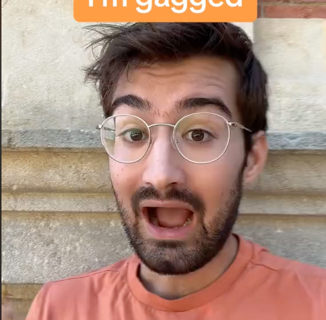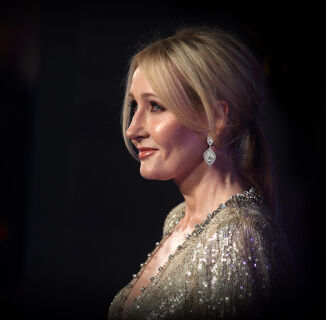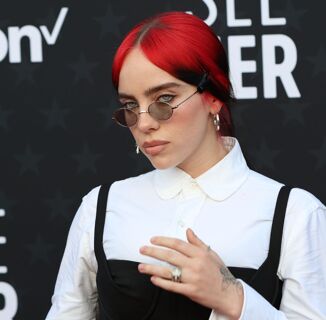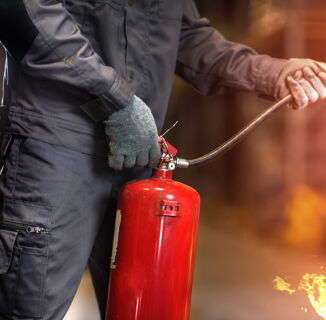I started watching The L Word four years after it first aired, when I was almost 19. As a child, I knew I was queer since age eight. I’d never been in a relationship with anyone other than a cis man. Still, I was watching the show for the first time hoping to feel closer to queerness. Closer to my community. Closer to real.
By the time I got to Season 3 in 2008, a new character was introduced: Max Sweeney. I sat up, eyes fixed to the screen. Watching Max, I recalled Ivan, the transmasculine character from Season 2. I felt the electricity of recognition jolt my brain. Relating to both of them, in that moment I knew what that mean. Why I’d always felt different.
I was transgender.
Max Sweeny: Media’s first recurring trans man
Max Sweeney was the first recurring trans man character in a scripted series. When the third season of The L Word first aired in 2006, there were no visible transmasculine role models in media, or at least none I knew of. I did not know who Brandon Teena was, and I had never watched Boys Don’t Cry. The only trans people I had ever seen, until Ivan and Max graced my television screen, were the mocked and exploited trans women on Jerry Springer.
Ivan’s fluidity and swagger; Max’s raw queer masculinity — in them, I saw pieces of myself. However, I did not come out then. Nobody else in my life knew much about transgender people either, and they were straight. How could I come out to them when I didn’t feel like a man or a woman? They didn’t exist as a pronoun in that day and age. And nobody knew what non-binary was. Now that I knew trans men existed, I knew I was closer to that than I was to cis woman. But it still wasn’t exactly right. And Max’s portrayal was not kind. Neither was it accurate, though I didn’t know that then. What I did know is that I didn’t want to end up like him, so I stayed in the closet.
The timeline of trans characters in media
Looking at timelines of transgender characters in film and television, it becomes immediately apparent that most are trans women, many of them mocked, murdered, and stereotyped in their character arcs. In 2012, GLAAD’s report on ten years of trans characters on television found that 54% of those representations were negative. The rest ranged from problematic to good, with only 12 percent considered good enough for a GLAAD Media Award nomination.
The quality of representation matters as much as the quantity, but transmasculine and nonbinary people haven’t yet reached a significant representative quantity in media. Ironically, because of this, our portrayals are better simply because we have benefited from not achieving more representation until a time when there is higher awareness and sensitivity to trans issues overall.
Even so, quantity matters. I regularly see posts by transmasculine people much younger than I am lamenting that they didn’t know trans men existed earlier in their lives. These are teens growing up with Elliott Fletcher’s characters on Shameless, The Fosters, and Faking It. Cole Phelan as Tom on The Fosters. Ian Alexander as Buck Vu on The OA, and a handful of others. Not only that, but Fletcher, Phelan, and Alexander are trans themselves, even rarer for television and movies. Still, this is not enough, and non-binary representation is even harder to come by.
Coming out as trans masc
I have been out as trans for almost three years. This summer, I had top surgery. I am approaching two years on testosterone, and it hasn’t made me a monster. What a biologically essentialist and transphobic myth. My partner is trans, many of my good friends are trans and/or queer. In some ways, it feels as if I am living the queer millennial version of The L Word.
This summer also marked 10 years since the moment I saw Max. So at the end of August, I sat down in front of Netflix and opened the first episode of The L Word, in which Ivan appears. I wanted to know how it would feel, a decade later, to revisit these characters. Would that spark of recognition still be there? How they would compare to the representations I’ve come to expect and demand?
I’m grinning the moment Ivan makes his entrance. He commands the stage at The Planet’s drag king night, all pompadour and velvet suit. No wonder I connected with him. I always had a penchant for performance and an ongoing identification with David Bowie. Characters stumble over his pronouns. “I’m happy either way,” he says, slow and sweet, not giving an inch to their confusion. The most accepting character, ironically, is token straight woman Kit.
“Ivan is the one who gets to say if he’s a man or a woman, and he’s been telling me he’s more of a man,” she says.
“That’s delusional thinking,” Bette says. “It doesn’t work that way.”
Ivan’s erasure from The L Word
Ivan mostly disappears from the show after what has become the stereotypical trans reveal: he’s caught naked by Kit. His unbound chest on full display, as if to confirm for her and the audience that he isn’t really a man.
My heart hurts, but I flip forward in time to Max. Here’s that realness I wanted so long ago; he isn’t untouchably wealthy and well dressed. He’s dragged out of his truck and almost beaten before Jenny steps in. He’s harassed in restrooms. I watch, afraid and anxious the way I am in public, in real life, almost every day. He’s uncertain and awkward. And not just because of his gender, but for his economic class and way of dress, the other characters coldly analyzing him once he’s offscreen.
I thought the rewatch would be hard, but I didn’t expect it to verge on traumatizing. The sadness of seeing those episodes followed me after I turned off the computer. Within the first few episodes of the third season, Max was presented as every stereotype of masculinity, of butches, of trans men, the narrative painfully similar to the vitriol of trans-exclusionary radical feminists and conservative bigots. Eventually, I know from memory, he gets the same reveal as Ivan, but he’s pregnant and on testosterone, an image breathtaking in its othering. If the show at any point meant to critique how the world treats trans people, it failed.
Ivan and Max: Trans masc missed opportunities
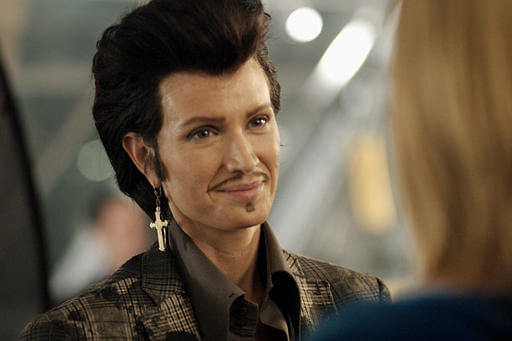
Max and Ivan deserved better. I watch, and all I see are missed opportunities, sparks of complexity snuffed out one by one.
In the 10 years since I first saw The L Word, I’ve changed. So has the lens through which I understand the world. Storylines that were just high drama then now make me cringe. Characters whose behavior went unquestioned for me before now horrify me with their manipulations and abuse. There has been much criticism of the show, but now that I’ve seen it again, the criticism does not quite encompass just how damaging it is. It’s not problematic for just trans folks, either. Max, Ivan, and the show’s few other gender-nonconforming characters did not escape its rocky and often cruel writing. As I watched, I realized I couldn’t put myself through what I knew what was coming. So I stopped watching.
These days, there are so many ways for trans and non-binary people to see themselves and find community. But film and television still matter because they reach out of particular communities and into the mainstream. People can filter out hashtags and accounts; they can’t filter out the queer characters in a widely distributed movie or popular Netflix show. According to GLAAD’s 2017-2018 report on LGBTQIA+ inclusivity in television, were 17 regular and recurring trans characters across broadcast, cable, and streaming original shows. Of those, four are trans men, and four are non-binary. That was the first year in which there were non-binary characters for GLAAD to count.
We need authentic trans representation in media
Things are changing. If a reboot of The L Word is coming our way, it must reflect those changes. The writers and directors must consult with trans folks and provide a depiction of queer women and people of all genders that is representative of who we really are, not just who some of us are. I want from media what I described in a tweet about Scarlett Johansson’s initial casting as real-life trans man Dante Gill. I want to know my ancestors on their terms. Not a cis-washed version of their lives. I want that for fictional characters too. I want trans actors playing trans characters, and I want trans characters whose arcs are about more than transition.
Dante Gill was no paragon of trans virtue. He was something better: he was complex. He was real. Max and Ivan, in the hands of different writers, different directors, could have been too. They were a lifeline to language when I needed it. Now I know we can do better. Now I want more.
Related:
Astrological signs of ‘The L Word’ cast
As an Alice sun, Lara moon, and Jenny rising, I fully acknowledge that I’m a mess. Here are the astrological signs of ‘The L Word’ cast.
“The L Word” Will Always Be Terrible. That’s the Point.
Loathing, loving, and lamenting over our worst-best queer television.
Netflix Probably Knows Your Sexuality Even Before You Do
Six months before House even thought about questioning her presumed heterosexuality, Netflix started showing her queer content.
Explore the world of trans masc representation, dive into the drama of The L Word, and keep up with all things queer when you subscribe to the IntoMore newsletter! Your dose of LGBTQ+ culture directly to your inbox.
Help make sure LGBTQ+ stories are being told...
We can't rely on mainstream media to tell our stories. That's why we don't lock our articles behind a paywall. Will you support our mission with a contribution today?
Cancel anytime · Proudly LGBTQ+ owned and operated
Read More in Culture
The Latest on INTO
Subscribe to get a twice-weekly dose of queer news, updates, and insights from the INTO team.
in Your Inbox

